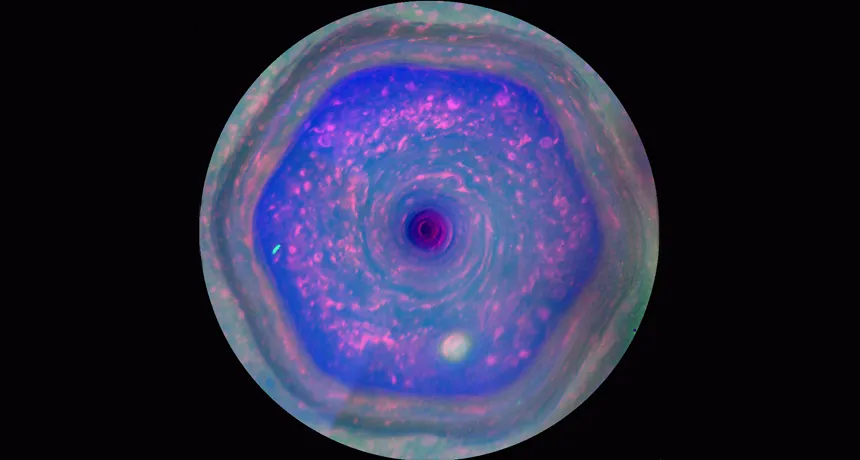Saturn’s six-sided cloud pattern gets a close look
New images show particles in the planet’s hexagonally shaped jet stream

SUPER SWIRL A sharp boundary defines the six-sided cloud pattern that spans about 30,000 kilometers across Saturn’s north pole, as seen in this new false-color image from the Cassini spacecraft.
Hampton University, SSI, JPL-Caltech/NASA







